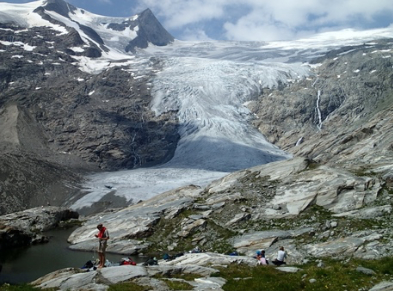Long-term monitoring in the Hohe Tauern National Park: Plankton communities as indicators of climate change impacts?
Stephen Wickham, Ulrike Berninger, Jana PetermannDepartment of Biosciences (Ecology Research Unit)
We have been involved in large-scale “long-term monitoring” in the NPHT since 2016. In the three regions Sulzbachtal, Innergschlöß and Seebachtal, different ecosystems (snow valleys, meadows, soils, streams, lakes, …) and groups of organisms (higher plants, big game, aquatic insect larvae, plankton, soil microbes, …) are sampled, measured and analysed every summer in order to collect data for the prediction of climate change processes. In the “Lakes” module, we are investigating the abundance and biodiversity of the plankton communities in a total of 18 lakes located along altitudinal gradients (above approx. 600 m). In combination with continuous and punctual temperature measurements, nutrient analyses and the determination of further chemical and physical parameters, we can observe whether and how the environmental factors or the biocoenoses are changing, how closely the water bodies are connected with each other and whether temporal and spatial changes are evident.Every year, interested students have the opportunity to participate in the campaign and to integrate special aspects, e.g. in the context of bachelor or master theses. Our team for this year is already in place (Eva, Stefan, Dominik and Flo will be leaving in August for the 21 campaign), but anyone interested is welcome to sign up for 2022.
Contact: steve.wickham / ulrike.berninger / jana.petermann @sbg.ac.at






